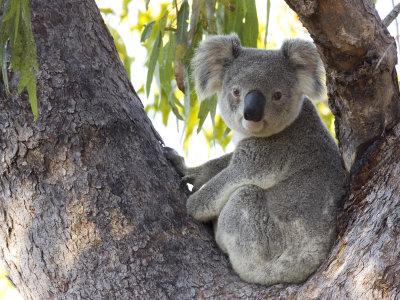A forestry company in Victoria, Australia, is using drones and thermal cameras to spot koalas before trees are cut down or controlled burns take place.
Hazelwood Forestry, in Latrobe Valley is regularly tasked with cutting down Hancock Victoria Plantations’ eucalyptus and pine trees. One complication is that carelessly harvesting – which some companies might go ahead and do – puts native koalas in danger.

Well hidden among the pine tree canopy, they can be difficult to spot from below.
“We are really ramping up how to manage and protect them in forestry operations,” said Eloise Cluning, who operates the Hazelwood North company with husband Russell and was speaking to the Latrobe Valley Express.
“Koala spotting – we do it every day before that day’s harvest. We actually capture and translocate koalas under a permit from DELWP,” Cluning said, during a recent seminar on the use of drones in forestry with the Institute of Foresters of Australia.
Read more: Ocean Alliance: Drones, Whales & Intel
Using drones to spot koalas
For years the company spotted koalas with the naked eye from below. Now, they use drones equipped with thermal cameras to check areas before operations get underway. They also carry out surveys and population studies.
Despite how it’s changed the way the company detects vulnerable koalas, the conditions for drone operations are far from idea. “There are dozens of obstacles. It’s not as straight forward as flying in an open paddock,” said Cluning.
“It’s quite labour-intensive and obviously a lot of koalas we are translocating are within the coupe boundaries. If we do not identify them and move them, they would be injured or killed. Koalas, unlike other wildlife, can’t jump out of the tree and move,” she said.
“They are at risk of being felled with the tree and processed with the tree, or flicked out of adjoining trees with trees being felled. They are not threatened in Victoria but it’s important we protect them and move them elsewhere.”
Spotting koalas without using relying on their thermal signatures would be difficult to say the least. “Seeing a koala in pine trees is very difficult. Even with young pine, you’ve got such a dense canopy it’s very hard to see. The drones have helped in that regard,” said Cluning.
Apparently, the biggest challenge to their aerial operations includes the local birdlife: The area’s eagles have not been too pleased with the new addition to the skies.
“Generally in the dark, the eagles leave us alone, but they definitely work in packs. Once, there were five eagles, I got chased as I brought the drone in to land,” said Cluning.
“A few have checked out the drone. It’s a bit too big and noisy for some; you have to be a brave eagle to take it on. One actually threw the drone into a tree. Eagles were circling as we retrieved the drone.”
Thermal imaging and conservation
It’s not the first time drones equipped with thermal cameras have been used for conservation purposes.
Ocean Alliance have explored the potential of using FLIR thermal cameras to track whales below the ocean’s surface. You can read more about that (and see our exclusive footage) here: Watch: Using a FLIR Thermal Camera to Track Whales
Malek Murison is a freelance writer and editor with a passion for tech trends and innovation. He handles product reviews, major releases and keeps an eye on the enthusiast market for DroneLife.
Email Malek
Twitter:@malekmurison
Subscribe to DroneLife here.







[…] couple of years ago, we shared the news that a forestry company in Victoria, Australia, was using drones equipped with thermal […]